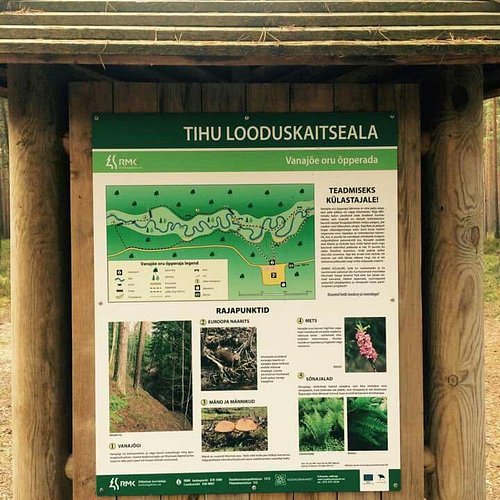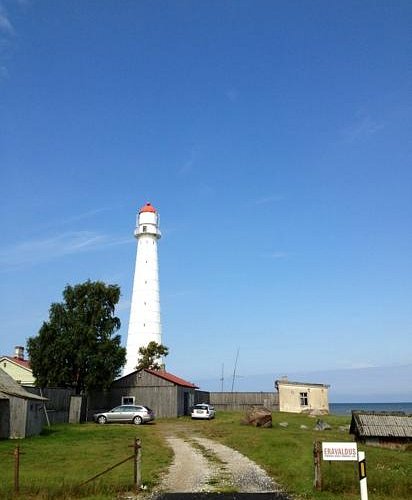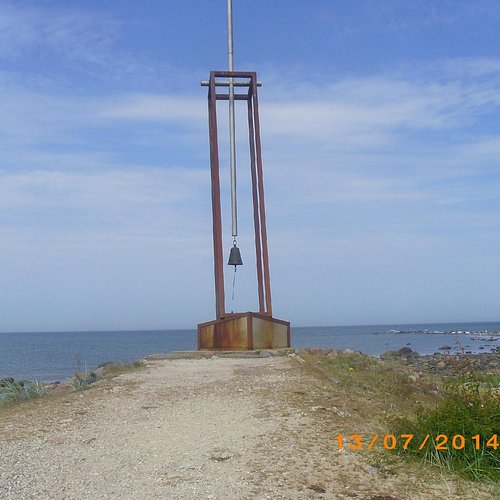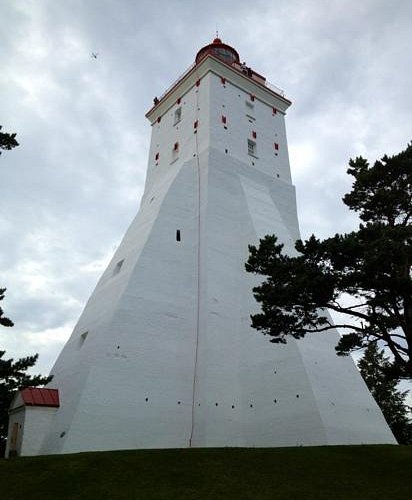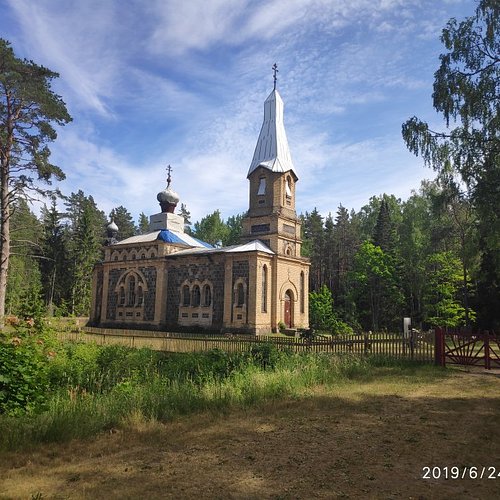Top 8 Things to do in Korgessaare, Hiiu County
Kõrgessaare (German: Hohenholm) is a small borough (alevik) in Hiiumaa Parish, Hiiu County, Estonia, on the northwestern coast of Hiiumaa island.
1. Vanajoe Valley Trail
Overall Ratings
5.0 based on 1 reviews
This trail forms part of Tihu landscape reserve and winds along the banks of the prettiest river on the island of Hiiumaa and the tops of its valley, which are as much as six metres high in places. It doesn't take a long time to get from one end of the trail to the other, but it is quite up-and-down, providing physical exercise as well as an interesting learning experience. The trail is 1 km long and fully marked. It does not cross through areas of water.
2. Tahkuna Lighthouse
Overall Ratings
4.5 based on 24 reviews
Tahkuna Lighthouse is situated on the north end of Hiiumaa. The construction of the cast iron lighthouse began in 1873. The lighthouse is assembled of cast iron parts of so-called Gordon system. System is based on prefabricated details, that are easy to transport. That's the reason why this high tower was rather easy to build. Interesting to know:• Czaric Russia bought the lighthouse from the world exhibition of Paris in 1871.• It's the highest lighthouse in Estonia - 42,7 m above the sea level.
Reviewed By kirsikivi - Tallinn, Estonia
It's the highest building of 3 main lighthouses on the island, though Kõpu lighthouse is located on a higher ground and beats Tahkuna of the total height above sea level. Loved the platform on top which you can see through :-)
3. The Memorial to the Victims of the Estonia Disaster
Overall Ratings
4.5 based on 18 reviews
Bronze bell – a ship’s or soul bell that starts ringing by itself in a strong wind. With the movement of its cross-shaped pendulum in a storm, it seems a bring a message from the sea – a bell tower in a way … symbolically. The incline of the monument has a visual and emotional impact and should also call to mind the last moments of the ship. Tender details are also added to the bronze bell – four child faces on each of the main points of the compass.
4. Kopu Lighthouse
Overall Ratings
4.5 based on 35 reviews
The history of the lighthouse began over 500 years ago when a landmark was needed by the Hanseatic League in the first place, as their merchants were complaining about ships disappearing in the Baltic Sea. The highest hill (68 m) of Hiiumaa, the Tornimagi, became the location of the lighthouse.In 1531 a massive stone tower was erected.Interesting to know:• Kopu is the third oldest constantly active lighthouse worldwide• In 1660 iron stairs were constructed on the outer wall of the tower.• In 1810 a staircase was built inside the tower
Reviewed By 322sigridt - Tartu, Estonia
The oldest (functioning) lighthouse on the Baltic sea is definetely worth a visit. In addition to great views from the top over much of Hiiumaa island and surrounding sea it offers an interrdting exchibition covering the history of the Kõpu lighthouse and introducing lighthouses around the Baltic.
5. Ruins of Puski Church
Overall Ratings
4.0 based on 1 reviews
During the period from 1889 to 1891, an apostolic orthodox church and a schoolhouse for the children of the congregation were built in Puski. The peculiar choice of location has been explained by the fact that the first Russian priests of Puski did not know the local conditions. The land was owned by Ungern-Sternberg who, as an opponent of the attack of orthodox faith and religious conversion in general, donated a plot in the middle of nowhere. Nowadays there are ruins of the church and schoolhouse in Puski and a quiet village graveyard sleeping with the sough of wind in the pine grove.
6. Hiiumaa Military Museum
Overall Ratings
4.0 based on 10 reviews
The museum managed by the Hiiumaa Military History Society is located in Tahkuna. The crown jewel of the exposition is the BB-316 cannon barrel from the Tahkuna Kukeraba battery. The museum exposition covers Hiiumaa’s coastal defence structures, armaments, and ammunition. In a barracks atmosphere, visitors can examine surveillance and communications equipment. There is a reconstruction of a border strip in the yard.The armament collection is still modest. In the diesel house, there is a generator ready to start up. Simple fuel drums also comprise a collection: a riveted drum from the beginning of the last century, from the German Wehrmacht and Finnish Lentojoukut, as well as a Russian armament oil drum.
7. Ristna Maritime Department Store
This isn't a shopping centre in the traditional sense of the word - it's a place that will give you something to look at and something to think about. Everything on display has been collected from our local beaches or kindly donated from people all over the world - and represents everything that finds its way into the sea. You can even buy a thing or two as well - there's quite a selection, and one that's often unique and surprising. And not rubbish at all! Here the present, past and future of our shores and seas meet; their magic and pain; carelessness and inspiration; beauty and ugliness.
8. Luidja Alder Forest
Luidja alder forest may seem like an average black alder forest to everyday passers-by as you can find these trees elsewhere in Hiiumaa marshes and stream banks. But in fact this is an area which has more than a hundred year history in experimenting with fixating unique dunes. The alder forest was first established due to the need to protect the beach road of Luidja and the nearby fields and meadows from blowing sands. The alder forest was established by Karl Friedrich Vilhelm Ahrens (1855-1938) who was born in Germany in Meclenburg-Schwerin. He studied forestry in Rostock and Greifsvald. Ahrens established the alder forest in order to fixate the sand dunes in 1901-1903.

